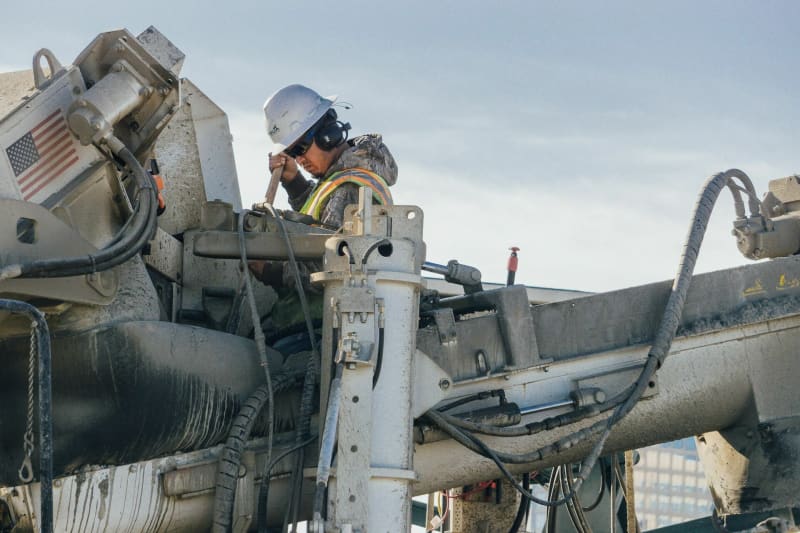Companies across the board are switching to ethernet radios to replace older wireless models and Supervisory Control and Data Acquisition (SCADA) systems. They’re finding Ethernet to be a much more scalable and reliable option than traditional devices, such as serial radios.
As Ethernet radios quickly become more affordable and widely available, enterprises and organizations will switch to them to transmit data and execute wireless communications over short and long distances.
What Is Ethernet?
Ethernet is a technology that connects devices or computers across a network. This is typically a Local Area Network (LAN) or a Wide Area Network (WAN). A good example is a bank of computers or printers in an office all being connected via Ethernet cables to exchange data.
However, with Ethernet wireless technology, you eliminate the need for any cables or inter-device network wiring. A modem can beam an Ethernet connection straight to all the devices in the office, including laptops, smartphones, smart assistants, and more. One host radio, connected to a server, can service several remote radios whether that’s in an office space or over thousands of miles of broken land.
How Are Ethernet Radios Different from Traditional Radios?
The earliest interface for machine-to-machine communication involved a protocol called RS232 which was a method of transmitting data with a single electrical signal. The characters would be transmitted one after the other, leading to the term “serial radios.”
These are well-suited to embedded devices, such as alarm and security devices, scales, and serial printers. They’re simple and cheap to produce, but generally speaking, they can’t be used on a shared network—with certain brand-led exceptions.
Ethernet radios, on the other hand, are built to seamlessly support a multitude of devices, sharing packets of data on a network. The devices simply need to be tuned to the same frequency to be able to access the data.
Both Ethernet and serial radios run on radio frequency (RF) networks. Wireless RF radios or modules have a built-in advantage over landline-dependent communication systems. Commercial cell towers, for example, have to be supported by underground fiber optic cables and cannot support the kind of long-distance communication that wireless radios can.
Applications for Ethernet Radio Data Transmission
Ethernet radios are two-way, versatile devices that are quickly becoming the norm for long-distance telemetry and communications, such as with SCADA systems. They’re ideal for facilitating data connections in remote areas where internet access isn’t readily available.
Some common applications include monitoring and controlling equipment remotely, such as wellheads and pipelines by the oil and industry, water and waste treatment equipment by public utilities, and environmental monitoring devices.
Ethernet radios are also frequently used for military command and control, including for drones and robots, and by the agriculture industry to make GPS corrections for planters and harvesters.
Advantages of Using Ethernet Radios for Data Transmission
Serial radios certainly aren’t obsolete. It’s not uncommon to see devices, such as printers, that support both Ethernet and serial functionality. However, Ethernet is quickly gaining ground. If you’re using an older radio system for wired or wireless communication, there are a host of reasons why you might want to switch to Ethernet and custom RF OEM modules.
- Built-In Network Strength Ethernet radios are connected through a dispersed network of nodes that communicate with each other to establish a network connection. As such, they have a fundamental advantage over serial radios in that they’re built to handle large volumes of complex data on a network with multiple access points. Transfer Speed Ethernet radios are a lot faster than serial radios. Different systems have different transfer capacities, however, generally speaking, they outperform serial radios for speed and efficiency since they use a stronger network.
This is particularly useful when you’re transmitting reports, transactions, or any other form of complicated data which can take a lot longer to send over serial radios.
Data Integrity
Ethernet radios also have excellent mechanisms for protecting the data being transmitted from loss or network errors. The most common Ethernet protocol, TCP/IP, for example, will stop all communication and wait to secure a lost packet of data, letting more data through only after the initial packet has been successfully transmitted. This makes it a much more reliable system of transmission than unsecured networks that can be interfered with.Detailed Reporting
Ethernet facilitates modernization and can result in more efficient reporting and analysis for involved stakeholders. Ethernet and RF modules with built-in web servers and file systems can transmit the data directly to a database management system or a web browser, instead of sending it to a printer. The data can be stored on the cloud where executives can access it on any device instead of having to print it out and be dependent on paper.Security
With cybercrimes on the rise, security and data privacy are prominent concerns for every organization. Custom Ethernet and RF modules offer you significantly superior security than with a run-of-the-mill open network. Protocols like security firewalls, WPA2 encryption, and built-in antivirus software can help secure your communications from hackers and malware.
The obvious advantages of Ethernet radios have fueled their adoption across industries and functions. The increased popularity has contributed to lower costs, making it a much more cost-effective and accessible technology. Ethernet radios are likely to be the operating standard for wireless industrial communication for the foreseeable future.




Top comments (0)